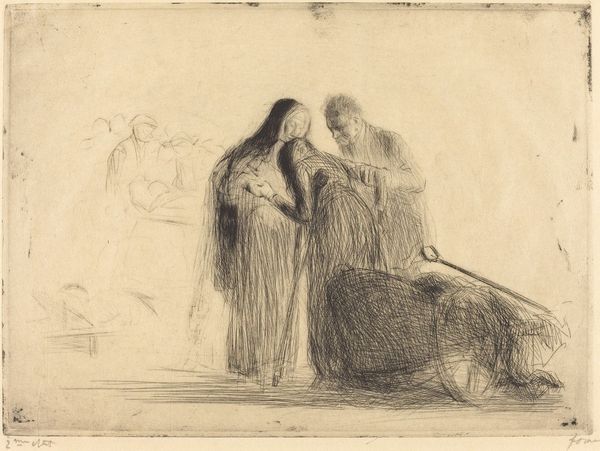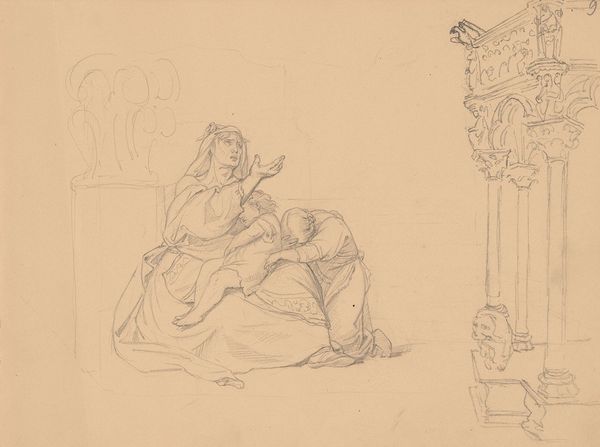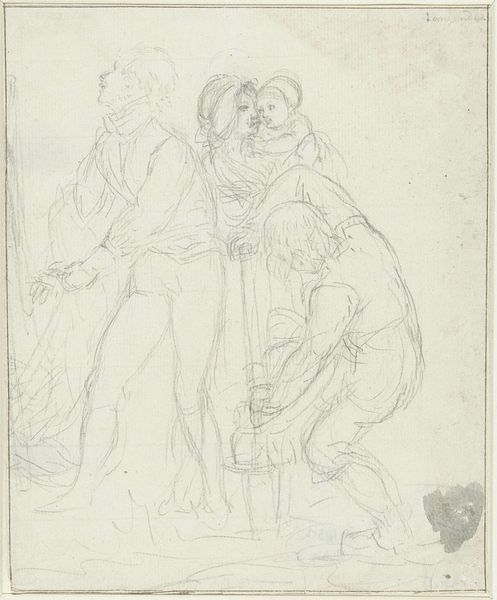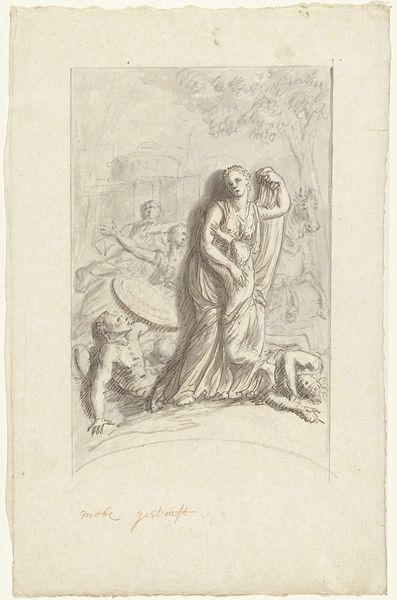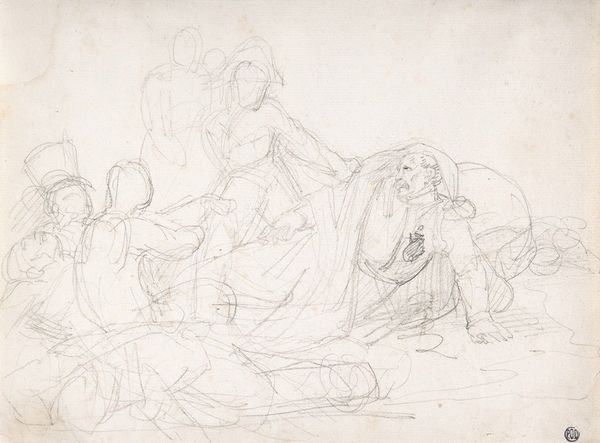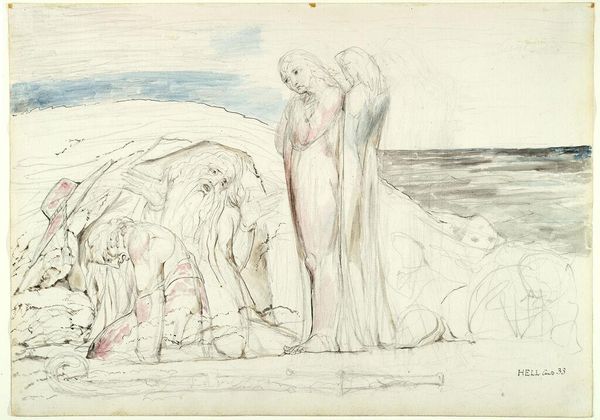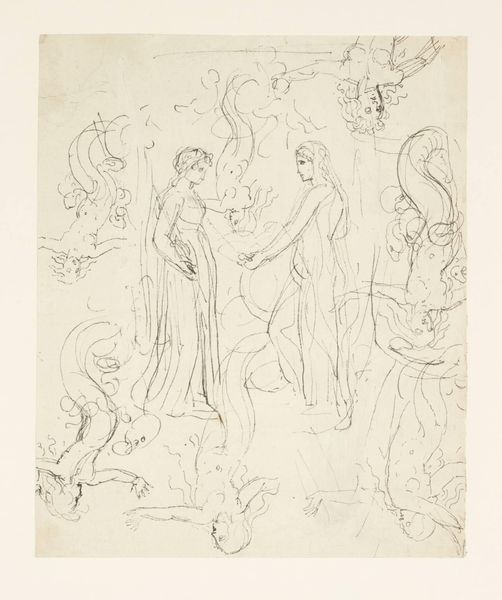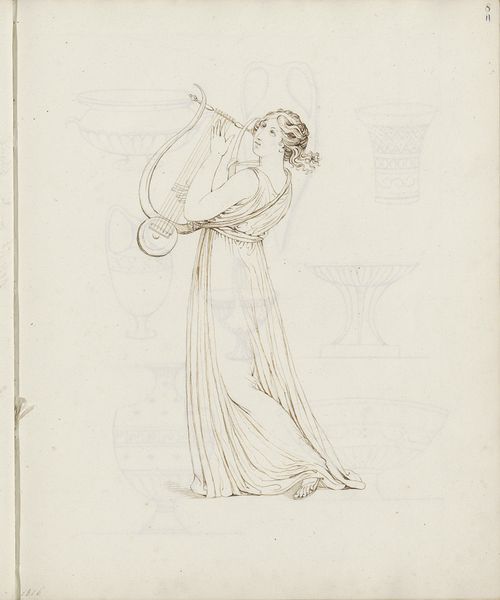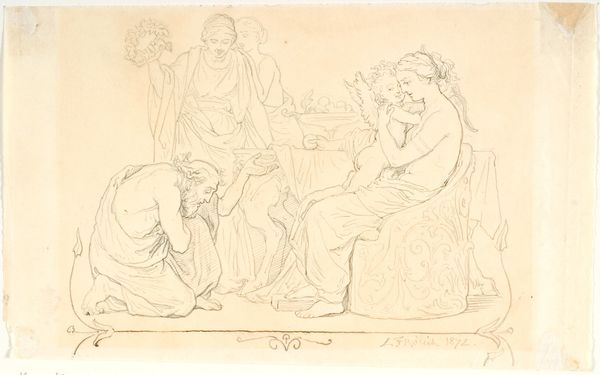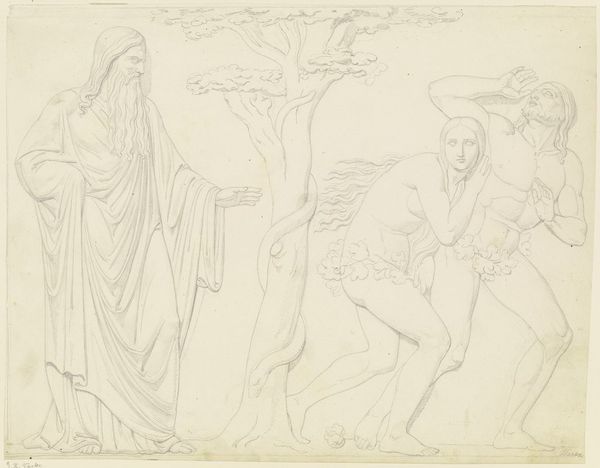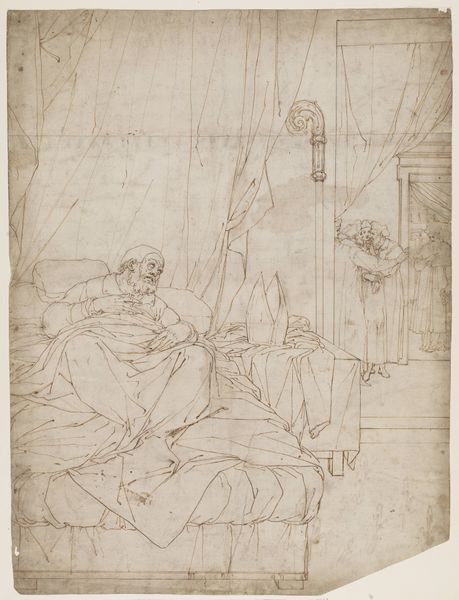
Dido bekent haar zuster haar liefde voor Aeneas 1777 - 1824
0:00
0:00
drawing, paper, pencil
#
portrait
#
drawing
#
neoclacissism
#
allegory
#
pencil sketch
#
figuration
#
paper
#
pencil
#
line
#
history-painting
Dimensions: height 193 mm, width 243 mm
Copyright: Rijks Museum: Open Domain
Editor: Here we have Anne-Louis Girodet's pencil drawing on paper, "Dido Confesses Her Love for Aeneas," created sometime between 1777 and 1824. It depicts two draped female figures. I'm immediately struck by the starkness and simplicity. The artist used very delicate lines to represent the scene. How should we interpret its composition? Curator: The linework certainly dictates the aesthetic here, wouldn’t you agree? It is Neoclassical, and this linearity aligns perfectly with its form. Focus, if you will, on the deliberate control Girodet maintains over his medium. There's a stark absence of color, drawing our attention instead to the interplay of line, form, and negative space. Note how the composition leads your eye, guided by the gestures and drapery of the figures. Where do you think your eye is led first, and why? Editor: My eye definitely goes to Dido's downward gaze and drooping posture. Is the heavy drapery of their gowns relevant? Curator: Absolutely. Observe how Girodet utilizes the drapery not just for adornment but as a structural element. The flowing lines create rhythm and movement, but more importantly, they reveal the underlying forms of the body and direct our gaze. Consider the lines not as boundaries but as active elements shaping our perception. Do you think there is any use of symbolism within the composition? Editor: Well, the figures are positioned asymmetrically, and there is a faint celestial body just visible in the window behind them. Is it an omen, perhaps? Or, what about the faint sketch of a classical oil lamp next to them? What did you observe? Curator: A formal analysis reveals Girodet as a masterful artist whose intellectual depth, combined with his deliberate line work, encourages deeper contemplation. I had not considered the sketch of the lamp myself. It lends itself nicely to semiotic analysis. Editor: I see now how each line contributes to the overall impact of the image and how stripping away color can bring us closer to appreciating pure form. I hadn't really appreciated before that the technique and the medium itself could be so telling.
Comments
No comments
Be the first to comment and join the conversation on the ultimate creative platform.
